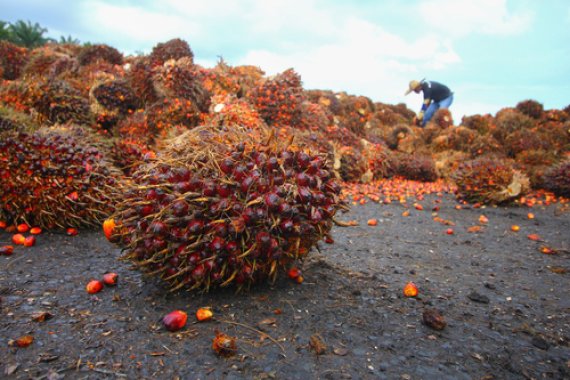Khasanah investigated the carbon balance of 20 oil palm plantations in Indonesia. Only 25 percent met the current EU requirements.
EU only wants sustainable palm oil
EU countries mainly import palm oil as a raw material for food and cosmetics, but its use for biodiesel is getting a lot of attention. The EU only wants to import sustainable palm oil if its CO2 emissions when used as biodiesel are at least 60 percent lower than those of fossil fuels. Next year, the norm will be set at 70 percent.
Carbon debt
When oil palms are grown on bogland, the emission increases, Khasanah discovered. Palm oil of mixed origin (both sand and bog) does not meet the European 60% norm either. With the switch from forest to oil palms, plantations start off with what is called a ‘carbon debt’. If this debt exceeds 10 tonnes of carbon per hectare, plantations cannot meet the 60% norm, says the Indonesian PhD candidate. A second-generation plantation does not have any carbon debt in the current calculations and can indeed meet the requirements.
Need for reliable data
The main palm oil suppliers, Indonesia and Malaysia, are being heavily discussed regarding their position as suppliers of biodiesel. Consequently, palm oil-exporting countries have a need for reliable data concerning the ecological footprint of the oil palm production. Khasanah, who works at the International Centre for Research in Agroforestry (ICRAF) in Indonesia, started investigating.
Carbon storage
She started by determining the above-ground carbon storage, assuming a 25-year lifecycle of the oil palm, at 20 oil palm plantations on sand and boglands in Indonesia. She calculated how much CO2 was lost in the layout of the plantations (which usually involved deforestation) and how much carbon the plantations stored in the tree trunks and leaves. She also determined the underground carbon storage in the soil of the plantations.
Set rules
From these data, Khasanah distilled a number of set rules. The more rainforest was converted to oil palm plantation, the larger the probability of that plantation not meeting EU guidelines. The share of bogland used for the plantation also diminishes the chance of the company meeting the EU norm, as does the use of artificial fertilisers.The oil palm plantations can use Khasanah’s model to specifically calculate whether their company meets the EU requirements for biodiesel. But she also drew some general conclusions based on her research of 20 companies. Only 25 percent of the sampled plantations could meet the 2018 European standards.
Segmentation
On a side note, this percentage is larger than the share of palm oil currently being shipped to Europe as biodiesel. Maintaining the European environmental rules therefore does not lead to lower amounts of biodiesel. It mainly leads to a segmentation of the palm oil market, says Khasanah; it also does not lead to a reduction of the negative environmental effects in Indonesia.
Mixed crops
However, Indonesian plantations have other options to tackle these environmental effects, Khasanah continues. She compared the climate scores of farmers who only had oil palms with those who had mixed crops. She noted that the mixed crops of oil palms with cocoa and black pepper achieved much better results than the monocultures, both economically and environmentally. Mixed crops yield the farmers higher returns per hectare, Khasanah concludes, which allows farmers to get their income from a smaller piece of land (and therefore forest). Some of these mixed crops can meet European criteria where the monocultures cannot.
Nima Khasanah received her PhD on 9 April from Meine van Noordwijk, professor holding an endowed chair in Agroforestry at WUR.

